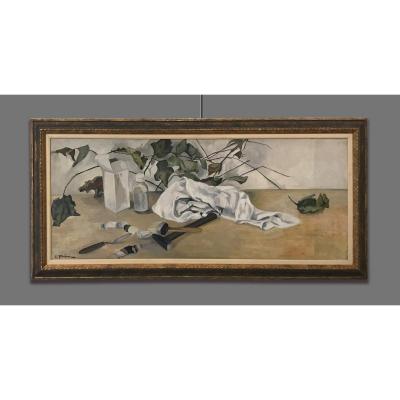With frame 135 x 66 x 3,5 cm
Signed lower left
Of noble lineage, his beginnings are self-taught and in 1922 he abandoned his regular studies to devote himself completely to painting.
Between 1922 and 1939 he resides between Florence and Paris becoming one of the protagonists of the group called "des Italiens de Paris" which includes, among others, Filippo De Pisis, Giorgio De Chirico, Gino Severini, Massimo Campigli, Renato Paresce, Mario Tozzi, Alberto Savinio and Anton Luigi Gajoni. Many of these artists were present in the French capital as early as the ten years, others from the twenties, developing an updated research on European taste and exercising it in the work done on their return to Italy.
In Paris he also met and frequented Magnelli, Fernand Léger, Juan Gris, Le Corbusier and actively participated in the artistic life of the city, exhibiting at the various Salons (des Indépendents starting from 1925; des Tuileries and d’Automne from 1927).
There are numerous personal exhibitions of him: in 1927 (Galerie Montparnasse), 1929 (Galerie Carmine), 1933 (Galerie Quatre Chemins), 1935 (Galerie Léon Bernheim) and ’36 (Galerie A. Sambon). In 1935 he exhibited at the Musée du Jeu de Paume on the occasion of the exhibition "Italian art of the nineteenth and twentieth centuries" and in 1937 at the Nouveaux Musées d 'Art Moderne.
Meanwhile, back in Italy, he participates in the Rome Quadriennale (1935 and 1943) and in 1936 he was at the 20th Venice Biennale where he exhibited Still Life with Shells, a participation that is repeated in the next edition.
In 1942 he exhibited in Milan, the following year in Rome and in 1951 we find him in Florence, where from 17 to 27 March he exhibited ten works at the Bar degli Artisti. Also in Florence, in 1961, the Santacroce Art Gallery set up an important personal exhibition for him, while in 1967 he exhibited at Palazzo Strozzi on the occasion of the exhibition dedicated to Italian art from 1915 to 1935 "Artists for Florence. International Museum of Contemporary Art".
The first period of activity is characterized by a figurative painting, where landscapes and characters with hieratic features predominate. Later, in contact with De Chirico and Savinio, he approaches metaphysical painting, but with an extremely personal imprint. Subsequently, his painting evolves towards an abstraction with a geometric trend in which large black strokes are spread on sharply cut and brightly colored flat surfaces.
Of his abstract manner André Verdet wrote in 1961: "In the still sign, fixed in large strokes, Medici closes his composition in the context of an almost implacable meditation, where the" angular "is charged with a contained emotion that vibrates for a long time throughout the canvas".
The painting is in very good condition.
We remain at your disposal for further information.





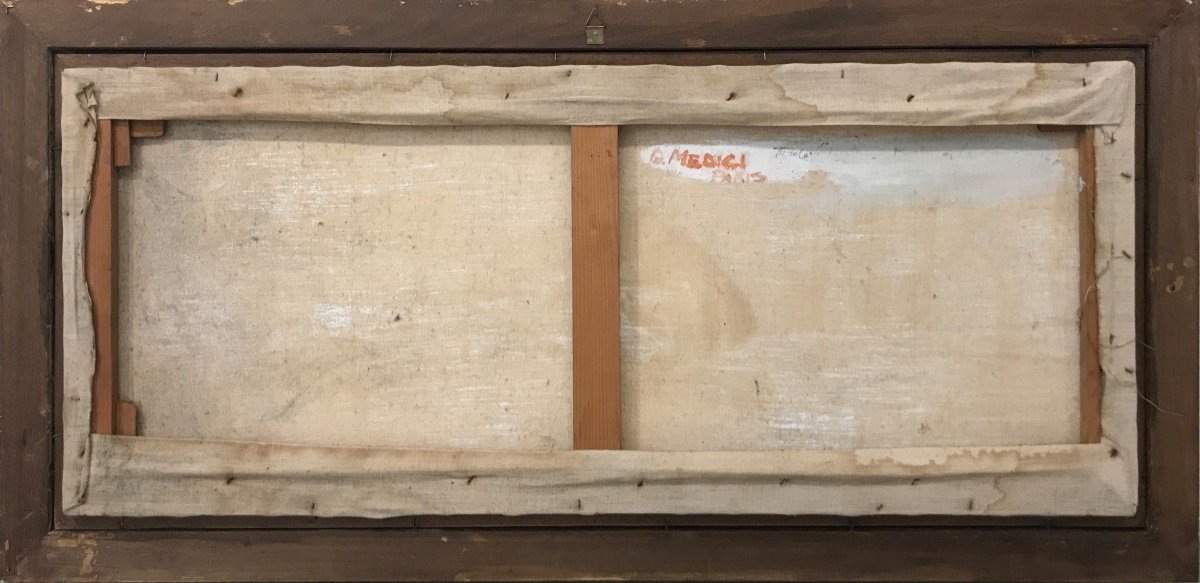
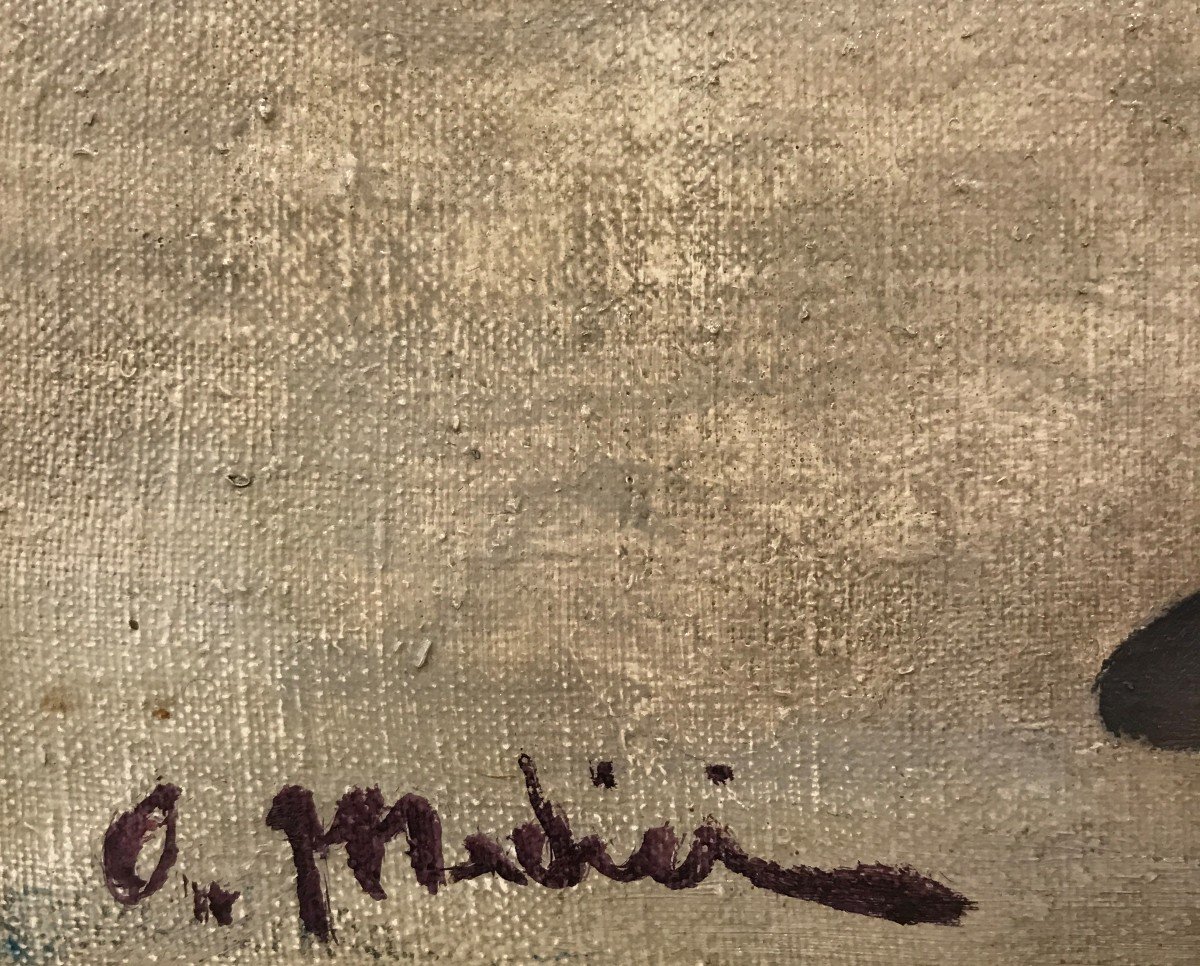







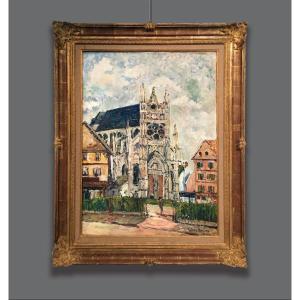





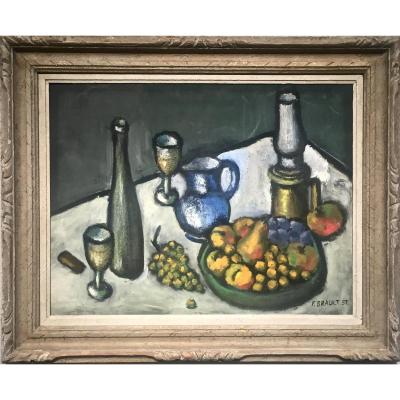
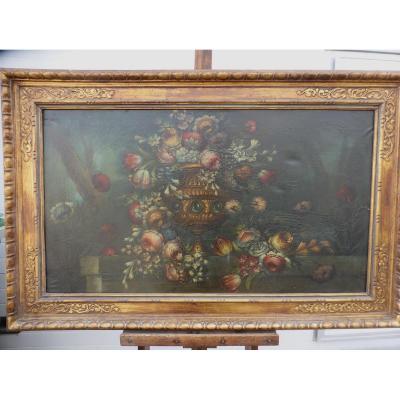
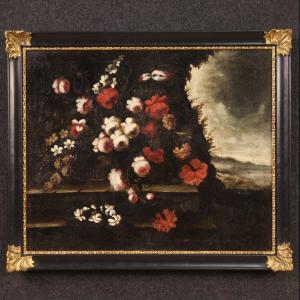
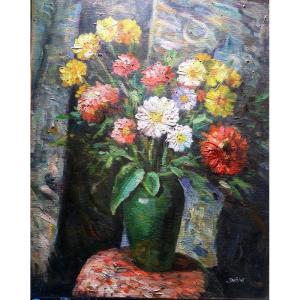

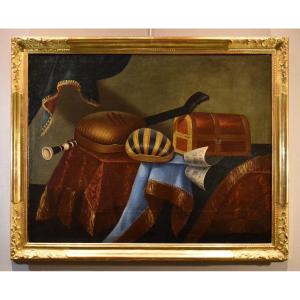



 Le Magazine de PROANTIC
Le Magazine de PROANTIC TRÉSORS Magazine
TRÉSORS Magazine Rivista Artiquariato
Rivista Artiquariato
